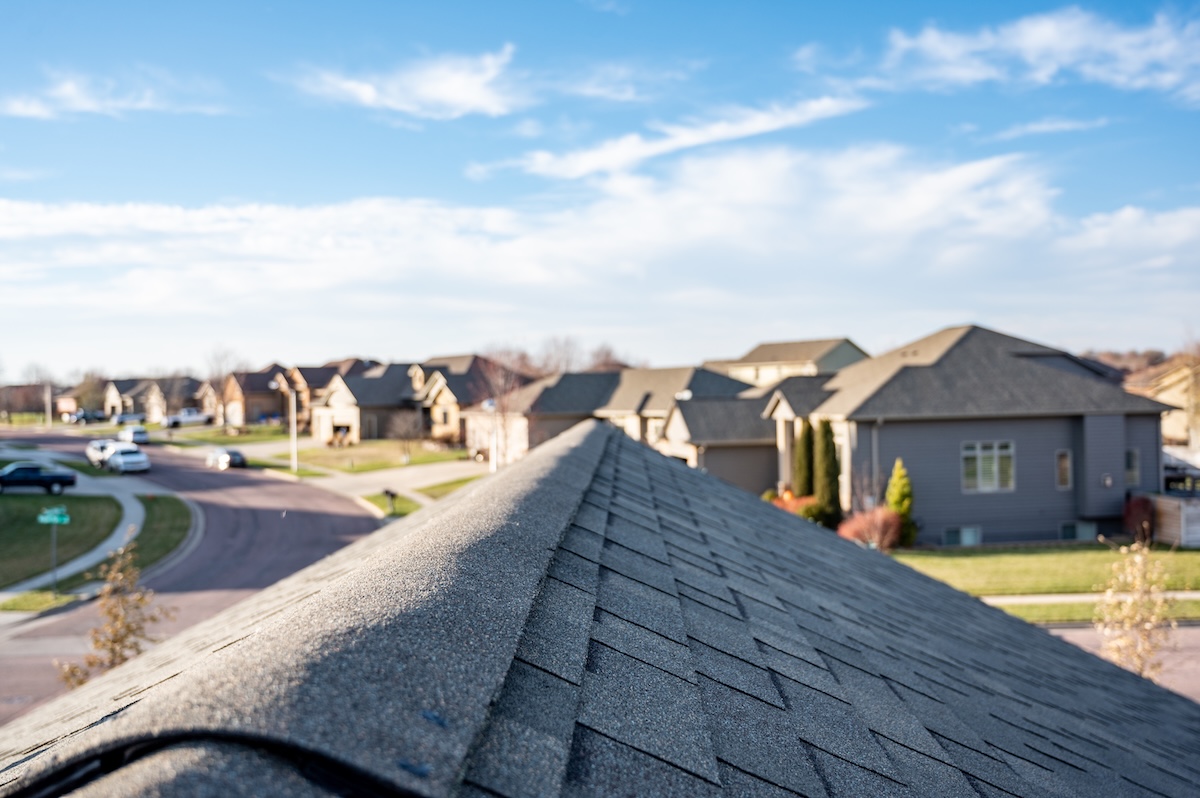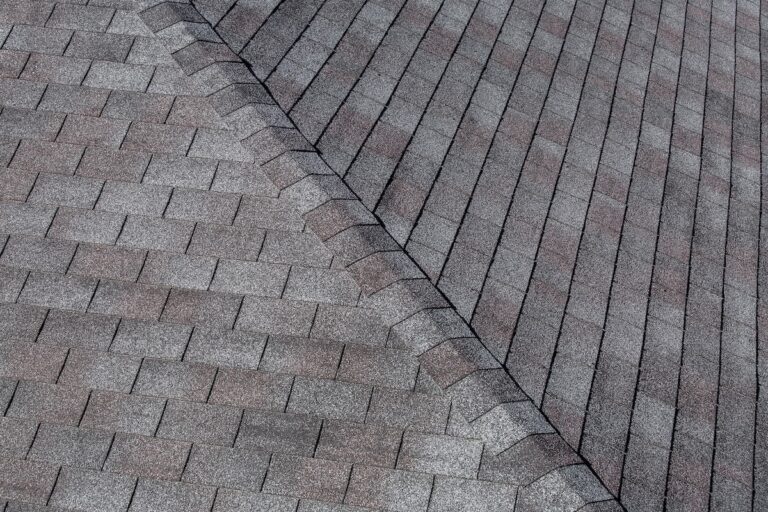A roof ridge cap is a key finishing feature that protects the peak of your roof from leaks, wind, and debris. It seals the joint where two roof slopes meet, keeping moisture out and ensuring the system performs at its best. While often overlooked, the ridge cap plays a crucial role in the longevity, appearance, and ventilation of your roofing system.
- Weather protection: The ridge cap prevents water infiltration at the highest point of your roof.
- Enhanced ventilation: Specialized ridge caps allow warm, moist air to escape from the attic.
- Clean appearance: A properly installed cap creates a polished, finished look for your home.
In this guide, we’ll explain the purpose of a roof ridge cap, compare material options, and share installation tips to help you maintain a strong and durable roofing system in Centerville and surrounding areas.
What Is a Roof Ridge Cap?
The roof ridge cap sits along the topmost edge of a sloped roof where two planes meet. It’s the “crown” of your roofing system, designed to protect the vulnerable seam underneath. Without it, rain, snow, and debris could easily enter the roof structure, leading to leaks and costly damage.
- Protective barrier: Shields the ridge seam from water, wind, and pests.
- Ventilation aid: In vented systems, ridge caps allow rising warm air to escape through the attic.
- Aesthetic enhancement: Creates a seamless, uniform roofline that completes the overall design.
Every well-installed roof includes a ridge cap, whether made of shingles, metal, or specialized vent materials.
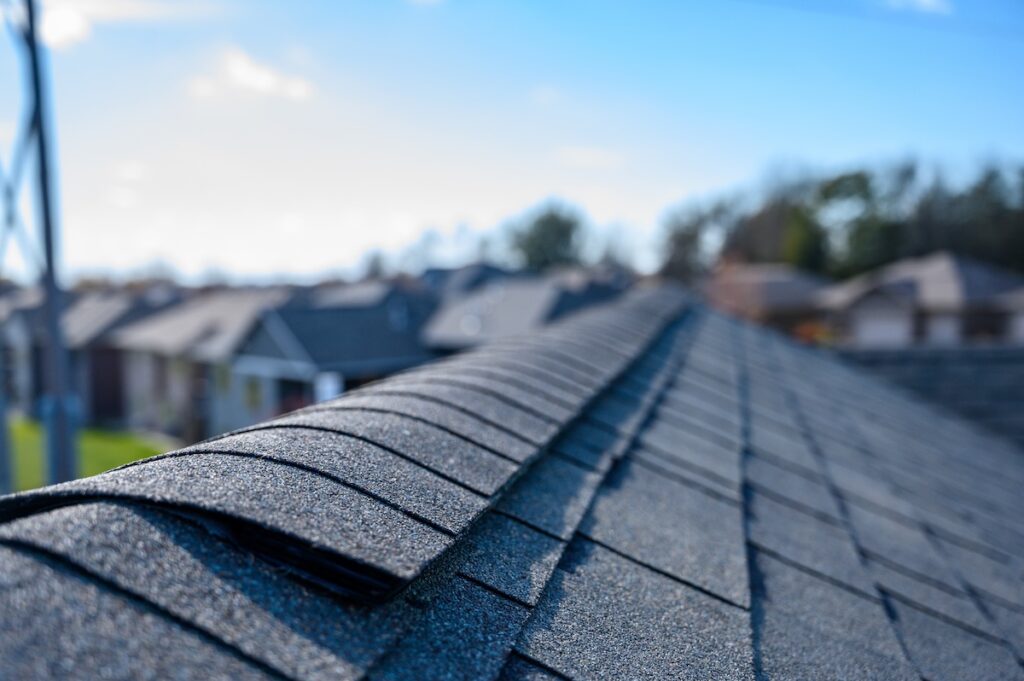
Why the Roof Ridge Cap Matters
Although small in size, the ridge cap has a big impact on overall roof performance.
- Prevents leaks: The ridge line is highly exposed to weather. The cap seals this area tightly to block moisture.
- Improves ventilation: When paired with soffit vents, a vented ridge cap maintains steady airflow through the attic.
- Enhances durability: Protecting the ridge helps prevent deterioration of the roof decking and underlayment.
- Reduces wind damage: A properly fastened ridge cap prevents shingles or panels from lifting during high winds.
- Boosts curb appeal: It gives your roof a symmetrical and finished appearance, improving property value.
In short, ridge caps help your roof function better, look better, and last longer.
4 Common Materials Used for Ridge Caps
Not all ridge caps are created equal. Different materials suit different roofing types and climates.
- Asphalt Shingle Ridge Caps
- Most common option: Made from the same material as your roof shingles for a consistent look.
- Flexible and affordable: Easy to install and cost-effective for most residential roofs.
- Color matching: Manufacturers design ridge cap shingles to match the roof’s main shingle color and texture.
- Metal Ridge Caps
- Ideal for metal roofs: Provides long-lasting protection against corrosion and severe weather.
- Seamless coverage: Often installed as a single continuous piece to reduce leak points.
- High durability: Resistant to wind damage and suitable for both residential and commercial roofs.
- Tile Ridge Caps
- Classic look: Used with clay or concrete tile roofs to maintain design continuity.
- Custom fitting: Tiles are shaped and curved to fit tightly over the ridge line.
- Heavy and strong: Offers excellent weather resistance but requires professional installation.
- Ridge Vent Systems
- Dual-purpose design: Combines ventilation with protective covering.
- Energy efficiency: Promotes proper airflow to reduce attic heat buildup.
- Compatibility: Available for shingle, metal, and composite roofing systems.
Choosing the right material depends on roof type, climate, and personal preference.
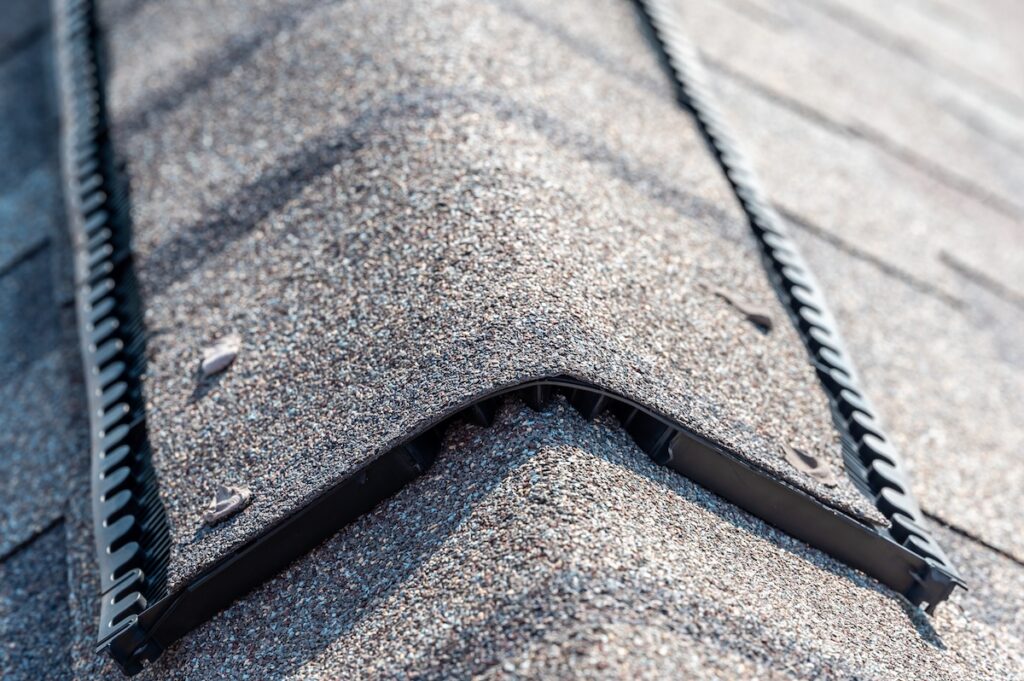
8 Steps for Proper Ridge Cap Installation
Installing a ridge cap may seem simple, but precision is key. Following the right process ensures proper sealing, airflow, and durability.
- Inspect the Ridge Line: Start by checking the peak of your roof for cracks, missing shingles, or soft decking. All repairs should be completed before installation begins.
- Clean the Surface: Remove dust, nails, or debris to create a smooth surface that promotes adhesion and alignment.
- Install Underlayment or Vent System: For vented roofs, place a ridge vent or mesh strip along the peak. For non-vented roofs, ensure a waterproof underlayment layer is in place.
- Prepare Ridge Cap Materials: Pre-cut or separate ridge cap shingles or panels according to the manufacturer’s specifications. This ensures consistent overlap and clean lines.
- Align Ridge Caps Evenly: Begin installation at the end opposite prevailing winds. Each section should overlap the next by several inches to channel water away from seams.
- Fasten Securely: Use corrosion-resistant nails or screws driven into the thickest part of the shingle or metal ridge. Avoid overdriving, which can crack or distort materials.
- Seal Exposed Fasteners: Apply roofing sealant or adhesive where needed—especially around nail heads, seams, or vent junctions—to prevent leaks.
- Inspect and Finish: Once installed, check alignment, fastener placement, and sealant coverage. A clean, uniform ridge line adds both protection and curb appeal.
Even with detailed steps, ridge cap installation is best left to professional roofing contractors who can ensure a watertight, long-lasting result.
Common Ridge Cap Problems and How to Spot Them
Even durable ridge caps can wear down over time, especially after severe weather. Regular inspections help identify issues early.
- Cracked or missing caps: Can allow water and debris to enter through the roof peak.
- Loose fasteners: May lead to wind damage or displaced shingles during storms.
- Leaks at ridge line: Often a sign of failed sealant or poor overlap between caps.
- Vent blockage: Dirt or insulation can clog vented ridge caps, reducing airflow.
- Rust or corrosion: On metal roofs, corrosion around fasteners can weaken protection.
If you notice any of these issues, schedule a professional inspection promptly to prevent further roof deterioration.
How Ridge Cap Ventilation Works
Ventilation is an essential part of a healthy roofing system. Ridge caps often integrate with attic ventilation systems to balance airflow.
- Air intake through soffits: Cooler air enters through soffit vents under the eaves, which is the essential function of a vented soffit system.
- Air exhaust through ridge cap vents: Warm, humid air rises naturally and escapes through the ridge vent.
- Balanced ventilation: Prevents heat buildup in summer and condensation in winter.
- Energy savings: Proper ventilation improves comfort and helps reduce HVAC strain.
This continuous airflow helps prevent moisture damage, ice dams, and roof material failure over time.
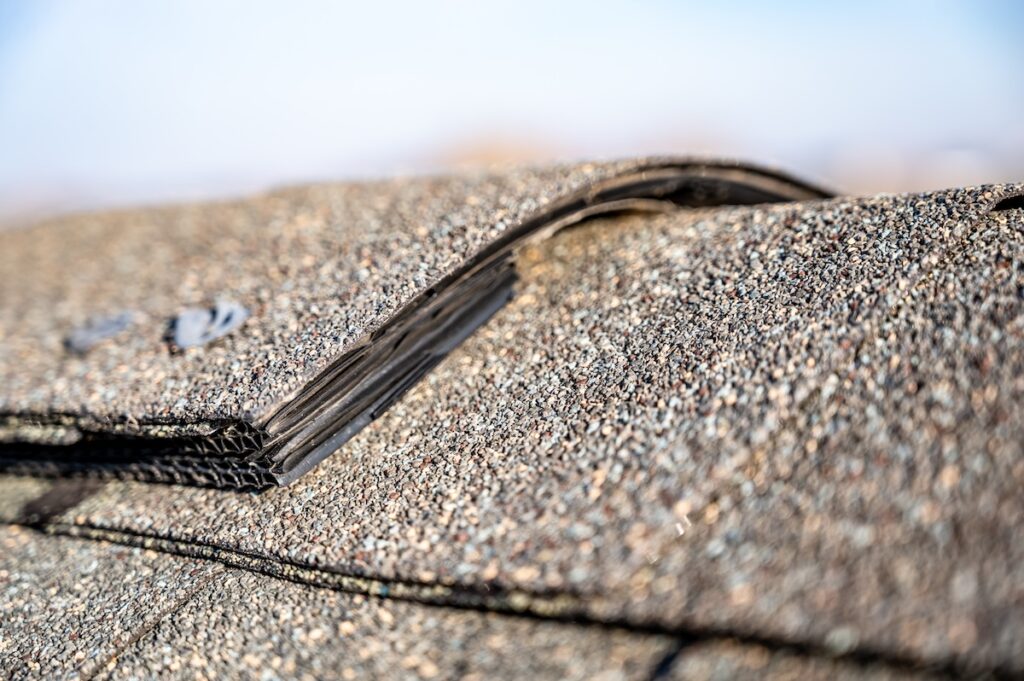
Maintaining Your Roof Ridge Cap
To keep your ridge cap performing properly, include it in your regular roof maintenance routine.
- Inspect annually: Look for cracks, lifted edges, or rust around fasteners.
- Clean gently: Remove leaves or debris blocking vented caps to maintain airflow.
- Repair damage promptly: Small leaks can lead to interior water damage if ignored.
- After storm damage: Check for lifted or missing caps after heavy wind or hail.
- Hire professionals: Regular inspections from roofing contractors ensure lasting protection and early detection of problems.
Consistent care extends the life of your roof and ensures your ridge cap continues doing its job effectively.
Protecting Your Roof With Johnson Restoration
A roof ridge cap may seem like a small component, but it’s vital to your roof’s strength and weather resistance. From preventing leaks to improving attic ventilation, it plays a major role in keeping your home comfortable and dry.
At Johnson Restoration, we help homeowners in Centerville and surrounding areas protect their investment with expert roof replacements, storm damage repairs, and long-lasting roofing solutions. Our roofing contractors bring quality craftsmanship and dependable service to every project, ensuring your home stays secure through every season.
If your roof ridge cap shows signs of wear or wind damage, reach out to Johnson Restoration today. We’ll provide honest assessments, professional repairs, and the peace of mind that comes from working with a trusted local roofing company.
